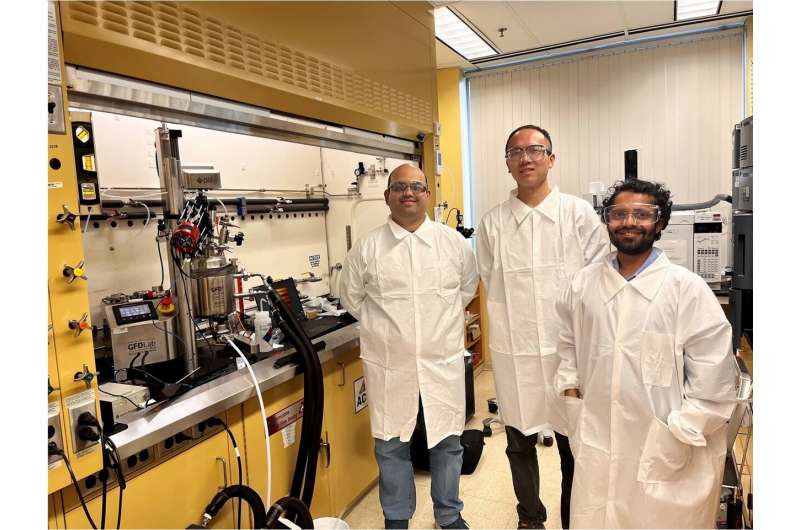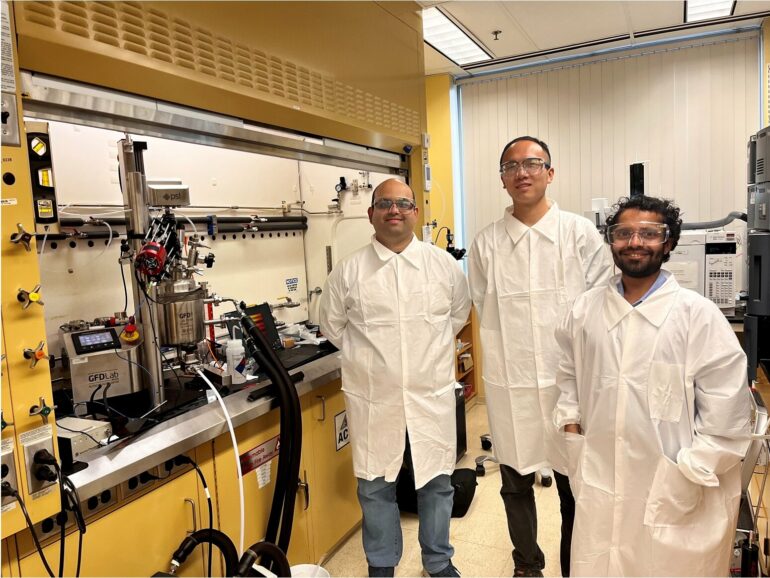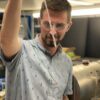The pharmaceutical manufacturing industry has long struggled with the issue of monitoring the characteristics of a drying mixture, a critical step in the production of medication and chemical compounds.
At present, there are two non-invasive characterization approaches that are typically used: a sample is either imaged and individual particles are counted, or researchers use scattered light to estimate the particle size distribution (PSD). The former is time intensive and leads to increased waste, making the latter a more attractive option.
In recent years, MIT engineers and researchers developed a physics and machine learning-based scattered light approach that has been shown to improve manufacturing processes for pharmaceutical pills and powders, increasing efficiency and accuracy and resulting in fewer failed batches of products.
In a paper, titled “Non-invasive estimation of the powder size distribution from a single speckle image” published in Light: Science & Applications, a team of scientists, led by Professor George Barbastathis from Department of Mechanical Engineering, Massachusetts Institute of Technology, U.S., and co-workers expands on this work, introducing an even faster approach.
“Understanding the behavior of scattered light is one of the most important topics in optics,” says Qihang Zhang Ph.D., now an associate researcher at Tsinghua University.

A photo of researchers with their instrument. From left to right are Ajinkya Pandit, Yi Wei and Shashank Muddu. © by Qihang Zhang, Ajinkya Pandit, Zhiguang Liu, Zhen Guo, Shashank Muddu, Yi Wei, Deborah Pereg, Neda Nazemifard, Charles Papageorgiou, Yihui Yang, Wenlong Tang, Richard D. Braatz, Allan S. Myerson and George Barbastathis.
“By making progress in analyzing scattered light, we also invented a useful tool for the pharmaceutical industry. Locating the pain point and solving it by investigating the fundamental rule is the most exciting thing to the research team.”
The paper proposes a new PSD estimation method, based on pupil engineering, that reduces the number of frames needed for analysis. “Our learning-based model can estimate the powder size distribution from a single snapshot speckle image, consequently reducing the reconstruction time from 15 seconds to a mere 0.25 seconds,” the researchers explain.
“Our main contribution in this work is accelerating a particle size detection method by 60 times, with a collective optimization of both algorithm and hardware,” says Zhang. “This high-speed probe is capable of detecting the size evolution in fast dynamical systems, providing a platform to study models of processes in the pharmaceutical industry including drying, mixing and blending.”
The technique offers a low-cost non-invasive particle-sized probe by collecting backscattered light from powder surfaces. The compact and portable prototype is compatible with most drying systems on the market, as long as there is an observation window. This online measurement approach may help control manufacturing processes, improving efficiency and product quality.
Further, the previous lack of online monitoring prevented systematical study of dynamical models in manufacturing processes. This probe could bring a new platform to carry out research and modeling for particle size evolution.
This work, a collaboration between physicists and engineers, is generated from the MIT-Takeda program. Collaborators are affiliated with three MIT departments: Mechanical Engineering, Chemical Engineering, and Electrical Engineering and Computer Science. George Barbastathis, professor of mechanical engineering at MIT, is the article’s senior author.
More information:
Qihang Zhang et al, Non-invasive estimation of the powder size distribution from a single speckle image, Light: Science & Applications (2024). DOI: 10.1038/s41377-024-01563-6
Provided by
Chinese Academy of Sciences
Citation:
Study accelerates AI-based particle size probe for medication manufacturing (2024, September 12)



